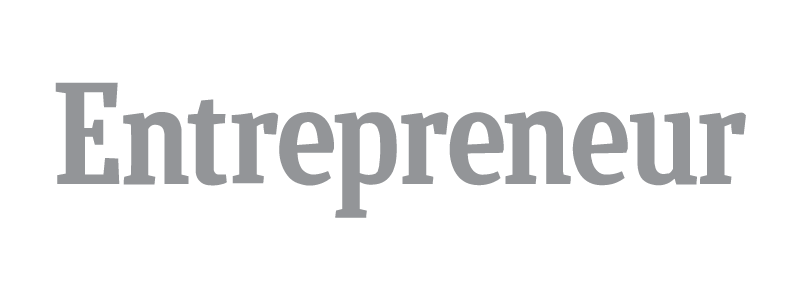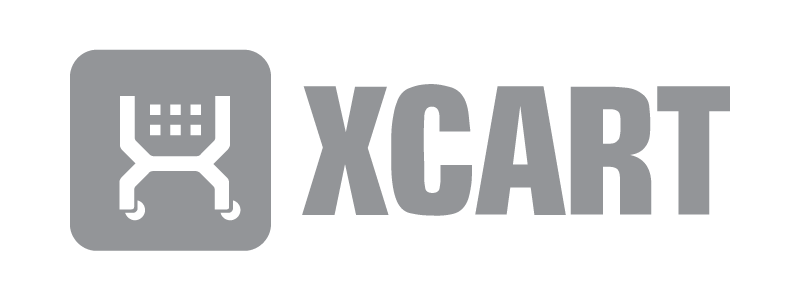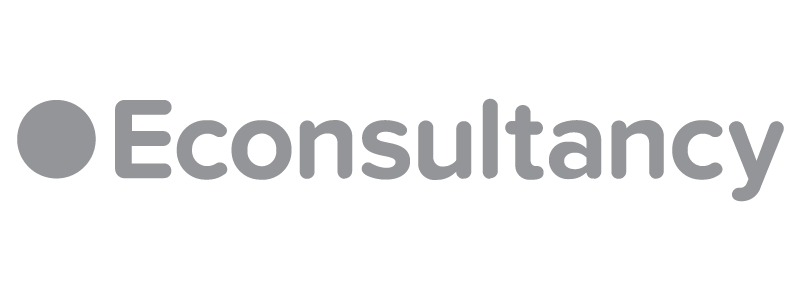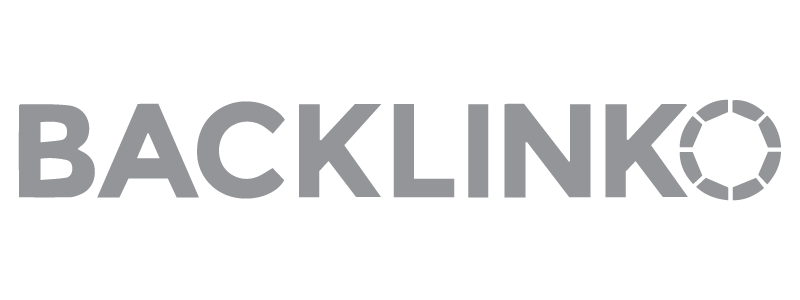Starting a print-on-demand company is a great way to break into the ecommerce game without taking on the expenses and risks that come with the territory.
You don’t have to invest in inventory upfront and hope it works out. Suppliers handle inventory, storage, and fulfillment—plus printing and production. You only pay for what you sell. Kind of like dropshipping, but for custom products.

See, while it’s easy and affordable to get started, there’s more to launching a profitable print-on-demand business than you might think.
In this guide, we explain what it takes to get up, running, and ready for success—one step at a time.
Launching a POD company looks a lot like starting your own online store, regardless of the business model. Like traditional e-commerce, dropshipping, and even sites selling SaaS subscriptions, it starts with a plan.
You’ll need to validate your idea, register your business, and start building a website and brand.
If you’re new to ecommerce, I’d recommend checking out this guide to launching an ecommerce business.
This will give you a primer on the basics before we get into the “fine print” of what building a profitable POD business actually entails.
Print-on-Demand Niche Business Ideas
When it comes to selling custom products with using the POD business model, you’re not limited to just t-shirts. Many small business owners find success by focusing efforts on a product niche, such as pet products or home decor products.
And since print-on-demand companies offer a wide range of products beyond t-shirts, your online business can, too. Other merchandise options include:
- Apparel – full clothing lines with hoodies, sweatshirts, tank tops, skirts, dresses, swimwear, leggings, shoes, hats, etc.
- Phone cases, phone holder clips
- Totes, Bags, and Backpacks
- Home and Kitchen – wall art and posters, canvas prints, magnets, pillowcases, throw pillows, blankets, cutting boards, cups, mugs, glassware, aprons, tablecloths, placemats, towels, shower curtains, etc.
Keep in mind, however, that because each print provider has its own product range, you may need to work with multiple print-on-demand sites to get all the custom products you want to offer.
Define Your Business Goals
Your first order of business is figuring out what you’re trying to achieve by starting a POD business.
Yeah, a lot of it is about making money, but you’ll need to be more specific if you want to build a sustainable business with the print-on-demand business model.
Consider whether you’d like to specialize in a particular product category. Think—home decor, custom artwork, personalized dog outfits, you get the idea.
Do you plan to build your store around a specific theme or interest? If you’re a yoga influencer, your shop might focus on yoga products like custom-print yoga pants, mats, and accessories. If you’re a chef, you might offer things like cutting boards, dishes, as well as physical recipe books.
Or the overarching theme might be your podcast or YouTube channel. In which case, you’ll likely be selling merch related to your fandom.
You might launch a print-on-demand company for many reasons.
Here are some examples:
- Monetize a hobby/skill set. Artists, writers, musicians, gamers, and even someone with a passion for tennis or baking might launch a PoD business to turn their talents/interests into $$$. This approach allows aspiring creators to test the waters with minimal risk.
- Sell merch to an existing fan base. If you already have a loyal following, starting a POD company allows you to diversify your revenue streams and deepen your connection with fans. To source products—your best bet is to let the fans drive the strategy.
- Generate passive income. Some sellers get into print on demand to generate passive income—much like dropshipping entrepreneurs. Here, money is the name of the game. The goal is more about identifying niche audiences, capitalizing on emerging trends, and trying to get the best margins.
- Validate a product/business idea. Another reason for launching a print-on-demand store is that it provides a low-cost way to test new products/ideas without taking on the risks that come with buying inventory/building a product from scratch. Because you’re not handling production, storage, or fulfillment in-house, you can experiment with minimal risk.
- Print items for giveaways/rewards/loyalty programs. You might also incorporate elements of print-on-demand to reward your customers/fans. For example, custom shirts, stickers, wall art, and tote bags make great gifts for VIP customers & employees. Or, you might use them as part of a swag bag or sign-up offer to bring in new business. This could be an extension of your business or a promotional strategy that supports a different business model.
Choose Your Products
You might think print-on-demand is all T-shirts and totes, but there’s an endless array of customizable options that offer something that feels more unique/out-of-the-box. Many suppliers offer customizable sneakers, sheets, backpacks, even watches, and BlueTooth speakers.
As an example, here are some customizable boots offered via JetPrint:

The important thing is selecting products that resonate with your target audience.
Yes, you only pay for the products you sell. However, the chances of building a profitable business increase dramatically when you use data—not assumptions or gut feelings—to determine what’s in your store.
This will also save you from wasting time and resources designing and promoting products no one wants.
So, how do you find the right products? Well, there are several tools you can use to gather insights—including some familiar sources.
Facebook, Instagram, and Other Social Platforms
One of the easiest ways to gather product intel is simply taking part in relevant conversations on social media channels—Instagram, TikTok, Facebook, Twitter, Pinterest, Reddit, Quora—anywhere your target audience hangs out online.
By engaging with followers and even lurking around forums and feeds, you’ll be able to get a clear sense of what your audience is excited about right now and what kind of language they use to talk about it.
At this stage, avoid actively promoting your business and instead focus on listening and asking questions.
While spending time on your socials is a super-effective way to get to know your audience and the trends they care about, it’s not especially efficient. If there’s room in your budget, consider investing in a social listening platform.
A few options worth checking out:
Search and shopping data
- Google Analytics & Google Keyword Tool. Google’s free SEO and PPC tools are a good way to find out what people are searching for, how they found your site, and which campaigns & content were most effective in driving traffic, generating sales, etc.
- Amazon. If you don’t have an active store (and access to the metrics that come with the territory) check out Movers & Shakers or Best-Selling Products by category to get an idea of what’s selling.
- Etsy. Similar idea. Here, except, Etsy offers trending gift ideas, curated lists, and popular gift ideas for different recipients—kids, pets, etc.

- Keywords Everywhere. A free extension (with the option to pay for more detailed insights) that surfaces suggested keywords based on the queries you enter in the search box. For example, here’s what comes up if I search for “product discovery sites:”

- Exploding Topics—a freemium tool that aims to surface emerging topics before they hit the big time. You’ll have the option to filter results by category—including e-commerce. But, this tool is best used to kick start the research process—serving up some buzzwords/brands you might want to look into.
- Google Trends. If you’re not sure where to start your research, look at Google Shopping Trends for top searches and breakout trends. Unlike trending topics in the general search & YouTube categories, shopping results focus only on searches with “high commercial intent.”
At the moment of writing, Nike, sneakers, and Pokemon were trending. In that case, you might enter “sneakers” into the search bar to do some more investigating.

You’ll see that women’s wedge sneakers and slip-on sneakers are on the rise.
For example, if you’re selling shirts, you’ll want to consider the fit, fabric, and style based on your audience’s preference. A big scratchy shirt will not cut it if you’re selling to a fashion-obsessed audience. You’ll also want to consider sustainability—particularly if this is a core concern among your audience.
So, your next move might be looking at social media channels like Instagram and Pinterest to see what designs your audience gravitates toward.

Finally, you might also consider looking at drop shipping research tools that help you look at shopping trends in context with profit margins, expenses, and more.
A few examples:
Your PoD research stack will depend on several factors, including your target market, business goals, and budget. But, the main takeaway here is that the best results come from analyzing a diverse mix of data sources.
For example, looking at individual comments helps you get into your audience’s heads and understand them in context. Keyword data can help you identify top-performing products, as well as which queries people enter to search for specific products.
With product discovery platforms and industry forecasts, you’re getting an insider’s take on where things are headed next—which can also help you gauge whether an emerging trend is already fizzling out or on the brink of getting big.
To learn more about product selection and research, this recent post provides a detailed breakdown of tools, tactics, and what to look for when fleshing out your digital catalog.
Pick Your Channels
You’ll want to start by creating your own website. Even if your initial plan is focusing on marketplaces/social selling, your website serves as a “home base” for your brand.
You own the data generated through your site. This helps you understand shopper behavior in the context of sales, marketing, and customer satisfaction data. Plus, you’re not subject to the whims of changing algorithms.
It’s hard to build a profitable business if you’re only selling on one or two channels. Instead, try to connect with customers on their terms. Make it easy to browse, buy, and engage with your brand, so shoppers feel comfortable visiting your site later on.
A quick note: If you haven’t committed to an e-commerce platform, check out this side-by-side comparison to find one that meets your needs.
While you’ll want to work on driving traffic to your site, it’s hard to generate enough traction to support your business—at least early on.
So, you’ll also want to leverage relevant social accounts, paid ads, and third-party marketplaces to get in front of the right people.
For example, Instagram, Facebook, YouTube, Discord, Twitch, Pinterest, and TikTok all allow you to sell products directly to your audience without taking them away from those channels.
If you’re using a hosting platform like Shopify or BigCommerce, you can integrate your store with a long list of external channels—and manage them in one place.
Here’s what Shopify’s Messenger integration looks like:

3rd-party marketplaces like Etsy, Amazon, eBay, and Walmart allow you to tap into a massive audience. But, they will take a cut of your earnings and require sellers to meet strict guidelines in terms of product photos, descriptions, shipping options, etc.
They’re also pretty darn competitive, so it’s important to understand your audience and develop products that cater to their unique interests and, if you’re a creator, enhance the experience of being part of the fandom.
While marketplaces come with a long list of challenges—and an even longer list of rules—sticking it out means leveraging the reputation and reach of the tech giants to grow your own business.
Sure, you give up some control over pricing, policies, and how you present your products. But it’s a lot easier to reach new audiences and drive sales when you’re not starting from scratch.
This guide to selling on Amazon outlines what it takes to succeed in the biggest digital marketplace on the planet.
As your business grows, you can start shifting traffic to your own website so you can keep a larger share of your profits. You can also automate your marketing efforts with a tool like Systeme.
Think of marketplaces and shoppable socials as part of your advertising/demand gen strategy. Yeah, you “pay to play,” but it’s an investment that will help grow your business.
Come Up with a Plan for Sourcing & Creating Designs
Once you’ve determined what to sell—and to whom—you’ll want to figure out where your designs will come from.
Consider whether you need a professional designer
You’ll want to get a clear idea of which parts of the design process you can handle yourself and which you’re better off outsourcing. Make a list of everything requiring some kind of visual asset, and from there, look for professionals who can fill in the gaps.
That might include:
- Branding elements—logos, typography, colors, style guide, banners, etc.
- Design options for PoD products
- Photography for product pages, campaigns, etc.
- Downloads—posters, stickers, overlays, emotes, etc.
You might be great with a paintbrush but lack the photography skills needed to make analog artwork shine in a digital environment. Maybe branding isn’t your thing, or your logo design skills suck.
Bringing some extra hands on deck is worth the investment. It’ll make you look more professional and help you deliver products your customers will love.
Now, how you go about hiring a designer and what tasks you decide to outsource depends on A: what gaps you’re trying to fill and B: your budget.
For example, a creator with an established following might hire a designer permanently or engage a freelancer regularly. The benefit is you’ll be able to collaborate with the designer, use audience feedback to inform designs, and establish a consistent image across all platforms and product lines.
Still, if a long-term hire is out of reach, you’re not in trouble—you just need to be strategic.
You might try commissioning designs from sites like Upwork, Fiverr, or Behance–which offer more affordable access to pro-level designs.
Look toward online design tools to fill the gaps
Online design tools cover an expansive range of features, functionality, and experience levels. Here are just a few examples of tools you might use—through your selection depends on what you’re selling, existing design skills, and what tools you’re already using:
- Adobe Tools are great for putting together professional-looking designs. Photoshop and Illustrator offer a robust set of features but also come with a steep learning curve. But—their drag-and-drop platform, Spark, allows non-designers to generate simple designs for T-shirts, logos, and social posts. And photo-editing platform Lightroom makes it easy to level up product pics and create custom filters.
- Drag-and-drop platforms like Canva cater to beginners—with templates that function as digital design guard rails, though there are plenty that fall somewhere in the middle. Placeit offers similar functionality but also includes a mockup generator and templates for gaming, podcasting, apparel design, and more.
- CAD Crowd and TurboSquid can generate 3D-printable files—either from scratch or using an existing template.
- Font Bundles sells commercial-use font collections you can incorporate into your designs. Here’s a little taste of what you’ll find in the platform’s “Sans Serif” category.

- Stock photo sites like Unsplash, Shutterstock, and PixaBay can also come in handy. You don’t want to rely too much on stock photos, but they can help fill the gaps in your visual asset catalog—especially if you do a bit of editing and can incorporate original photos and designs. I’d also avoid using photos with recognizable models.
It’s not the end of the world, but it could signal to your audience that you don’t have the resources to invest in original designs/digital assets. In certain cases, this could damage your brand.
Choose Your Print-on-Demand Supplier
Once you’ve figured out what to sell and how you’ll source your designs, you’ll want to find a print-on-demand supplier.
Here are a few options worth looking into:
- Printify connects sellers to a network of PoD suppliers spanning the entire globe. This allows you to source materials based on customer location—ensuring low shipping rates and quick turnaround times.
- Printful provides a range of printing options—cut-and-sew, sublimation, embroidery, and the option to add custom tags and inserts to orders, and includes a mockup generator you can use to preview products before publishing to your site.
- Teelaunch offers a variety of customizable products like rugs, cutting boards, and pet products. The platform offers a few different printing options, including laser etching, cut-and-sew, and all-over prints.
- JetPrint offers some unique custom products like all-over print hoodies and dresses, custom sneakers, quilts, and watches.
- CustomCat boasts two-day turnaround times and custom products that go beyond printing—offering embroidery and dye sublimation options.
- Lulu xPress caters to the self-publishing community, offering printed materials like hardcover & paperback books, magazines, calendars, and comics in a variety of sizes.
- SPOD is a Shopify integration that allows you to upload files, design from scratch, or customize one of the platform’s 50+ free templates.
Merch and Product Selection
The first thing you’ll want to look at is product selection.
A robust catalog is definitely a plus, but it’s more important to look at whether a supplier offers the right products. Look closely at their offerings, read reviews, and try to get an accurate picture of whether products meet quality expectations and align with audience interests and preferences.
Keep in mind, you’re not locked in with a single provider. You can mix, match, and switch suppliers any way you see fit.
Pricing and Costs
It’s business 101 stuff: if you want to turn a profit, you’ll need to price your products properly.
Rates are determined based on a whole host of factors, including industry, audience, and the quality/uniqueness of the products you sell.
As you evaluate suppliers, you’ll want to look at the big picture. You’re not just paying for inventory, you’re also paying for:
- Product costs
- Estimated profit margins
- Membership fees/subscriptions
- Shipping rates
The easiest way to set your prices is by using a data-driven tool that pulls data from multiple sources to determine how much people will pay. This type of thing comes standard in any e-commerce research/drop-shipping/market research tool, like the ones we’ve mentioned above.
But—some print-on-demand suppliers offer profit margin calculators for free on the site or as part of a monthly subscription. For example, Placeit has one that lists the cost of each product and how much you’ll bring in based on how much you sell it for.

But, it’s important to note that these tools only provide insights for consumer products that aren’t customized/unique—value is determined based on factors like materials, brand, scarcity, etc.
The challenge is you’ll need to factor in how much your designs are worth—think about how much time you spent working on the design, researching your market, hiring people to help you design, market, photograph your wares, etc.
Fulfillment and Turnaround Times
Sites like Custom Cat and SPOD offer two-day turnarounds on orders, which is a key selling point, given that customers now expect e-commerce orders to show up within a few days.
For “simple” products like T-shirts and totes, fast-moving suppliers might be your best bet. Though you’ll want to make sure they’re not sacrificing quality for speed.
For more “specialized” products, it’s better to focus on quality and craftsmanship.
For example, Teelaunch orders spend 3-6 days in production, but many of their products feature more complex customizations like etchings and alterations.
Here, the primary goal is making sure the products in your store arrive within the advertised timeframe—so long as you’re upfront about products with a longer lead time, customers shouldn’t have an issue with waiting. TLDR: don’t promise Amazon speeds if you can’t deliver.
Integrations with Other Platforms & Stores
There are two different types of print-on-demand suppliers. Print-on-demand services (like those mentioned above) allow you to design directly from the platform. Or—you can upload files from external sources.
Print-on-demand marketplaces are similar in that you can design products inside the platform, and the supplier handles shipping and fulfillment. The difference is the marketplace model requires users to sell designs on that same platform alongside other sellers.
The problem with POD marketplaces is they don’t allow you to build your brand outside of the platform, limiting your ability to grow a sustainable business across multiple platforms.
Beyond making sure your PoD supplier allows you to take designs to a second location, direct integrations with platforms like Shopify, Etsy, Amazon, eBay, etc., can save you a lot of time. Some options integrate only with Shopify, while others can support your entire omnichannel ecosystem.
FAQs
Turn Your Print on Demand Business Ideas into Reality
Print-on-demand is a versatile, low-risk business model that, done right, allows budding entrepreneurs, creators, and artists to unlock additional revenue streams, grow their audience, and build a brand they can scale.
But it’s not as simple as adding products to your store and sharing a link here and there. Like any business, POD’s success hinges on its underlying strategy, access to good data, and the knowledge and tools that enable smart decision-making.
To start a successful print-on-demand business, you’ll need to do a lot of research to ensure you choose the right products for your audience and POD suppliers that provide quality products at a reasonable price—and are able to reliably get orders out on time and intact.












